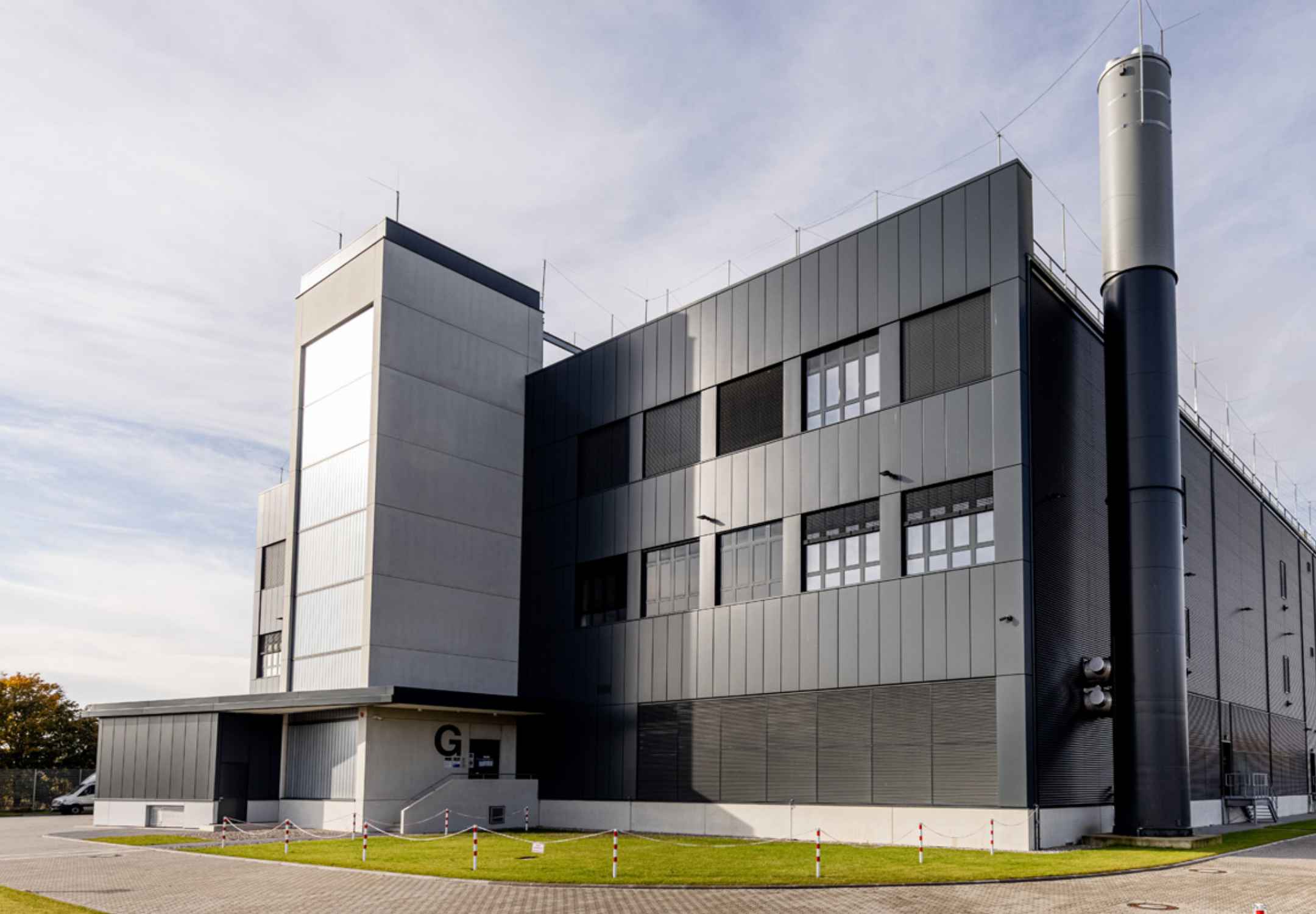-
Featured services
2026 Global AI Report: A Playbook for AI Leaders
Why AI strategy is your business strategy: The acceleration toward an AI-native state. Explore executive insights from AI leaders.
Access the playbook -
Services
View all services and productsLeverage our capabilities to accelerate your business transformation.
-
Services
Enterprise Networking
-
Services
Cloud
-
Services
Consulting
-
-
Services
Data and Artificial Intelligence
- Intelligent Solutions
- Data Strategy and Program
- Data Engineering and Platforms
- Data Governance and Management
- Data Visualization and Business Decision
- GenAI Consulting
- GenAI Platforms
- GenAI Industry Services
- GenAI Infrastructure Services
- GenAI Value Transformation
- View Data and Artificial Intelligence
-
Services
Infrastructure Solutions
-
Services
Global Data Centers
-
Services
CX and Digital Products
-
Services
Application Services
-
Services
Sustainability Services
-
Services
Digital Workplace
-
Services
Business Process Services
-
Services
Generative AI
-
Services
Cybersecurity
-
Services
Enterprise Application Platforms
![]()
Accelerate outcomes with agentic AI
Optimize workflows and get results with NTT DATA's Smart AI AgentTM Ecosystem
Create your roadmap -
-
-
Insights
Recent Insights
-
The Future of Networking in 2025 and Beyond
-
Using the cloud to cut costs needs the right approach
When organizations focus on transformation, a move to the cloud can deliver cost savings – but they often need expert advice to help them along their journey
-
Make zero trust security work for your organization
Make zero trust security work for your organization across hybrid work environments.
-
-
![]()
2026 Global AI Report: A Playbook for AI Leaders
Why AI strategy is your business strategy: The acceleration toward an AI-native state. Explore executive insights from AI leaders.
Access the playbook -
-
2026 Global AI Report: A Playbook for AI Leaders
Why AI strategy is your business strategy: The acceleration toward an AI-native state. Explore executive insights from AI leaders.
Access the playbook -
Discover how we accelerate your business transformation
-
About us
CLIENT STORIES
-
Liantis
Over time, Liantis – an established HR company in Belgium – had built up data islands and isolated solutions as part of their legacy system.
-
Randstad
We ensured that Randstad’s migration to Genesys Cloud CX had no impact on availability, ensuring an exceptional user experience for clients and talent.
-
-
CLIENT STORIES
-
Liantis
Over time, Liantis – an established HR company in Belgium – had built up data islands and isolated solutions as part of their legacy system.
-
Randstad
We ensured that Randstad’s migration to Genesys Cloud CX had no impact on availability, ensuring an exceptional user experience for clients and talent.
-
![]()
2026 Global AI Report: A Playbook for AI Leaders
Why AI strategy is your business strategy: The acceleration toward an AI-native state. Explore executive insights from AI leaders.
Access the playbook -
- Careers
Topics in this article
Efficient water management in data centers is a critical aspect of sustainability. But even as the data center industry makes progress in this area, we must recognize that designing a cooling system is not as simple as “wet is bad – dry is good”.
As with all important engineering decisions, there are numerous factors to consider and no one-size-fits-all solution. Let’s explore some of the complexities of water management in data centers to highlight how these factors are shaping our sustainability efforts.
Why ‘wet’ works better
Evaporative cooling systems use less electricity. This is because they are designed around the “wet bulb” temperature, not the “dry bulb” temperature. The latter refers to the air temperature as measured by a regular thermometer without taking any moisture into account. It represents the actual temperature of the air and is commonly displayed in weather apps.
On the other hand, the wet-bulb temperature takes into account the evaporative cooling effect of moisture in the air. It is usually measured using a thermometer with a wetted wick or cloth around its bulb. As the moisture evaporates from the wick, it cools the thermometer.
The wet-bulb temperature is typically 5°C–10°C lower than the dry-bulb temperature. In a data center environment, this means there is a limited need for refrigeration compressors because the wet-bulb temperature threshold is crossed less often.
This is one example of sustainability in action in data centers, but there are multiple considerations involved in designing a sustainable and economic cooling system for a data center.
These include the local climate; the availability of low-carbon energy resources; the water stress factor (which assesses the availability of and demand for water in a region or ecosystem); the required chilled water temperatures; the levels of embodied carbon in the cooling equipment; and refrigerant use.
At Global Data Centers, we take all of these factors into account to make informed decisions aligned with our sustainability goals, which include net-zero emissions across our operations and 100% renewable energy in our data centers by 2030.
Our data centers are located around the world, so we will reach different conclusions for, say, a semi-desert region with plenty of solar and wind power than for a tropical region with high annual rainfall and electricity generation dominated by coal-fired power stations.
In the simplest terms, we make engineering decisions that optimize our usage of finite energy and water resources in line with local availability.
The impact of AI and high-performance computing
High-performance computing (HPC) systems generate a lot of heat because of their significant processing power. Efficient cooling is essential for these systems.
Two common cooling methods used in HPC environments are direct liquid cooling – circulating a coolant, typically water or a specialized liquid, through the system to carry away heat – and immersion cooling, where the HPC components are submerged in a nonconductive liquid that absorbs heat directly. The heat is then dissipated through heat exchangers or other mechanisms.
The fast-evolving era of AI relies on HPCs, so there is rising demand for these cooling methods – but we can also increase the operating temperatures of our cooling systems, leading to potential savings in energy use.
The industry has not settled on a standard temperature yet. However, let’s take 32°C as a possible standard. We could then operate without chillers whenever the external dry-bulb temperature is below 25°C, or eliminate the use of chillers altogether (in all but the most tropical and humid climates) by using wet-bulb systems when the dry-bulb temperature is above 25°C.
This strategy not only improves power usage effectiveness (a ratio that describes how efficiently a data center uses energy) but also eliminates refrigerant use and the embodied carbon in chillers and the associated electrical infrastructure.
Hybrid systems can alternate between dry and wet operation. They use water only when it’s necessary. This drastically reduces their annual water usage while still realizing the electricity-saving benefits of free cooling – which takes advantage of lower external air temperatures during colder seasons or in regions with chillier climates to cool a data center.
Better drainage, less waste
Once we have minimized the number of hours during which water is evaporated, the next step for efficiency is to optimize drainage from pretreatment and bleed systems.
Bleed is required from all evaporative cooling systems so that the concentration of dissolved salts does not reach a level that can cause problems like scale and corrosion. Pretreatment systems such as water softeners and reverse-osmosis plant can help reduce total drainage by eliminating these salts from the source water.
We’re auditing all our “wet” sites to ensure our systems are optimizing our water usage – and we’re investing in improvements where necessary. For example, one such investment at our Hemel Hempstead 3 Data Center in 2023 is expected to reduce overall water use by 30 million liters per year.
New partnerships for a sustainable future
Rising data center demand around the world means we are also focusing on finding new sites, often outside existing markets that have little spare capacity. As we consider new locations, the water stress factor is a key factor alongside other sustainability indicators like access to renewable energy and the potential for heat reuse.
For instance, industrial enterprises such as food, drink and pharmaceutical manufacturers are candidates for reusing a data center’s waste heat – but they could also channel wastewater from their manufacturing processes to the data center’s cooling system.
These win-win relationships don’t just benefit the manufacturers and the data center providers but also support society’s efforts to build a circular economy that minimizes waste, maximizes resource efficiency and promotes sustainability.
To make this work, we need new thinking and innovative business relationships – and we are up for the challenge. Please join us!




